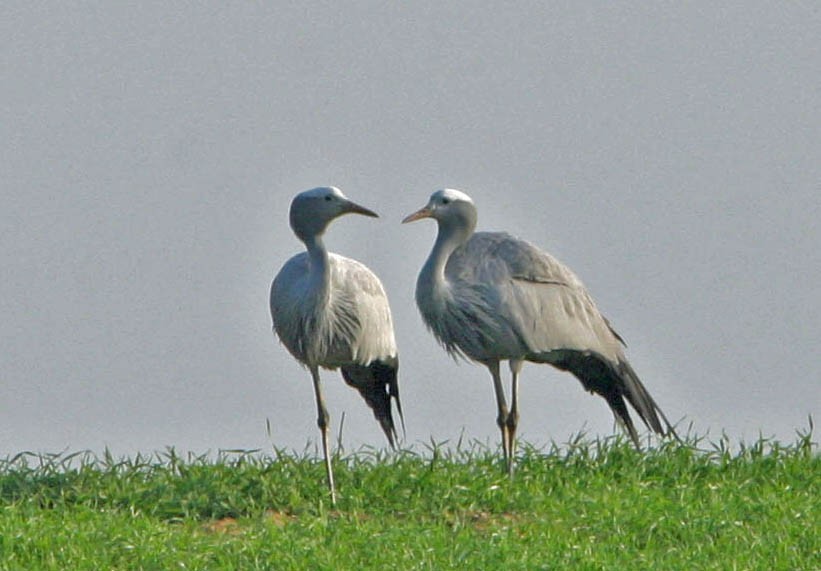Blue Crane
A species of Blue and Demoiselle Cranes, Also known as Stanley Crane Scientific name : Grus paradisea Genus : Blue and Demoiselle Cranes
Blue Crane, A species of Blue and Demoiselle Cranes
Also known as:
Stanley Crane
Botanical name: Grus paradisea
Genus: Blue and Demoiselle Cranes
Content
Description People often ask General Info
 Photo By Don Roberson
Photo By Don Roberson Description
The blue crane is a tall, ground-dwelling bird, but is fairly small by the standards of the crane family. It is 100–120 cm (3 ft 3 in–3 ft 11 in) tall, with a wingspan of 180–200 cm (5 ft 11 in–6 ft 7 in) and weighs 3.6–6.2 kg (7.9–13.7 lb). Among standard measurements, the wing chord measures 51.4–59 cm (20.2–23.2 in), the exposed culmen measures 8–10 cm (3.1–3.9 in) and the tarsus measures 20.5–25.2 cm (8.1–9.9 in). This crane is pale blue-gray in color becoming darker on the upper head, neck and nape. From the crown to the lores, the plumage is distinctly lighter, sometimes whitish. The bill is ochre to greyish, with a pink tinge. The long wingtip feathers which trail to the ground. The primaries are black to slate grey, with dark coverts and blackish on the secondaries. Unlike most cranes, it has a relatively large head and a proportionately thin neck. Juveniles are similar but slightly lighter, with tawny coloration on the head, and no long wing plumes. 
Size
1.2 m
Life Expectancy
20-30 years
Nest Placement
Ground
Feeding Habits
Blue Crane's diet includes sedges, grasses, roots, tubers, insects like locusts and grasshoppers, plus worms, crabs, fish, frogs, reptiles, and small mammals. They forage mainly on the ground, showing a preference for waste cereal grains such as maize and wheat.
Habitat
Blue Crane primarily inhabits open landscapes, such as extensive dry upland natural grasslands, where it thrives amidst an environment dominated by grasses and sedges. It is also known to frequent and adapt to wetlands, which provide significant roosting and nesting sites. In recent years, blue Crane has expanded its range to include agricultural regions, adapting to the modified environments of pastures, croplands, and fallow fields in broader geographical temperate to tropical regions.
Dite type
Omnivorous
People often ask
General Info
Feeding Habits
Bird food type
Behavior
Of the 15 species of crane, the blue crane has the most restricted distribution of all. Even species with lower population numbers now (such as Siberian or whooping cranes) are found over a considerable range in their migratory movements. The blue crane is migratory, primarily altitudinal, but details are little known. The blue crane is partially social, less so during the breeding season. There is a strict hierarchy in groups, with the larger adult males being dominant. They overlap in range with 3 other crane species but interactions with these species and other "large wader" type birds are not known. They are relentlessly aggressive to various other animals during the nesting season, attacking non-predatory species such as cattle, tortoises, plovers and even sparrows. Humans are also attacked if they approach a nest too closely, with the aggressive male having torn clothes and drawn blood in such cases. 
Species Status
VULNERABLE. Declining. Global population estimated in 2005 at over 25,580 individuals, nearly all in South Africa.

 Photo By Don Roberson
Photo By Don Roberson